If you’ve been caring for succulents for some time, it’s likely you’ve run into every gardener’s greatest nemesis: root rot. Root rot is a particularly sneaky disease that affects your plants’ roots, rotting them from the bottom up.
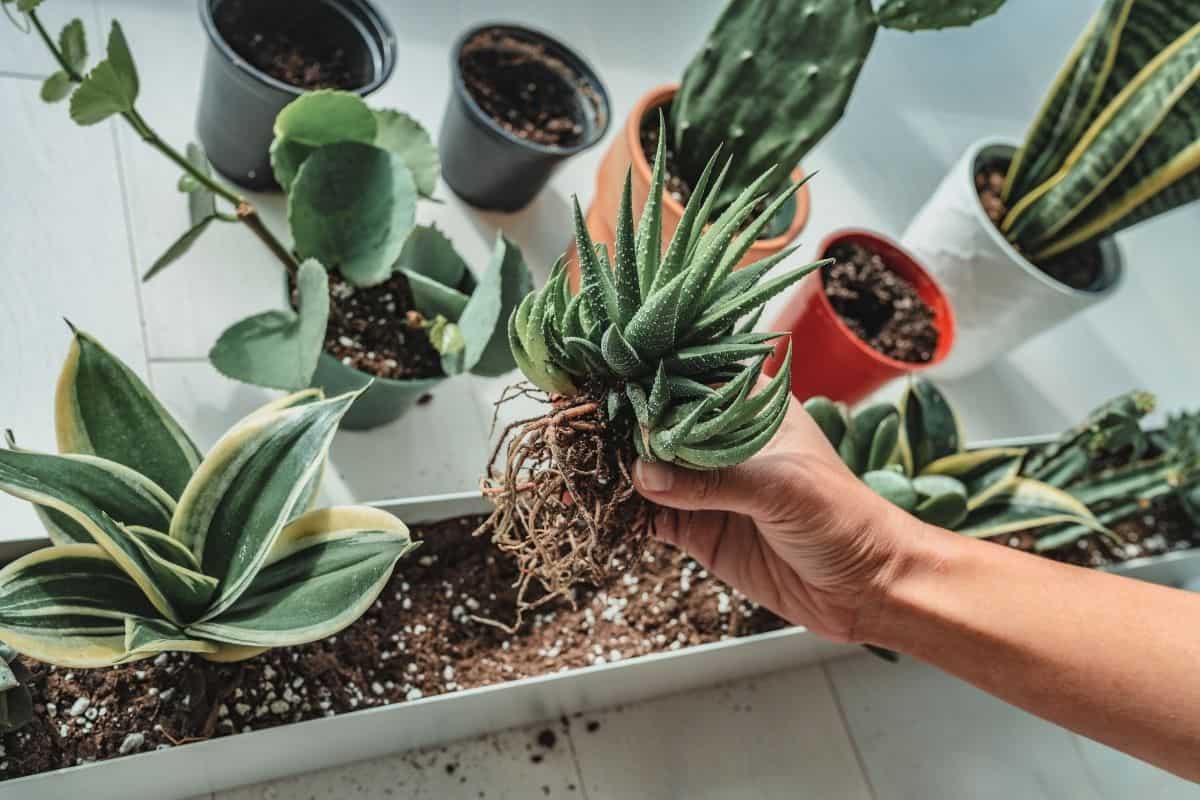
Root rot is a collection of diseases that can have many causes including fungus, bacteria, and overwatering. Determining the cause of root rot will help you to recognize what may have gone wrong in caring for your succulents and cacti.
Read Also:
Jump to:
What Causes Root Rot?
The most frequent cause of root rot is overwatering, but it can be caused by any problem that forces a succulent’s roots to spend a significant amount of time in moisture. As you know, most succulents prefer to have their soil dry out a bit between watering.
However, if you’re watering your succulents and cacti too often, the roots won’t have a chance to dry out, which can eventually cause the roots to rot. You may notice the telltale symptoms of overwatering prior to the onset of rot, in which case you may be able to save your overwatered succulent.
Root rot can also develop if there is nowhere for excess water to go, such as when using pots without drainage holes. Though it is possible to care for succulents in containers without drainage, it’s not recommended.
Another possibility is that the drainage hole becomes blocked, which is a common occurrence with succulents that have become pot-bound. Plants become pot-bound, when they are left to grow in a container without repotting when the plant outgrows its current pot.
The roots grow in a circular fashion around the pot, creating a tight mass which can block drainage. Though this is obviously harmful in terms of draining the excess moisture, it’s also incredibly harmful for the plant. So be sure to repot your succulents when they need it!
If you’re using a potting soil intended for use with flowers or vegetables, it could also be the reason your succulents develop root rot. Soil that’s heavy in clay will retain too much moisture for most species of succulents and cacti.
Regardless of how your succulents ends up in standing water, the excess moisture is what will cause the roots to rot. Though water isn’t always the sole perpetrator, it does play a major part in the development of root rot.
As previously mentioned, root rot can have many different causes, but moist soil creates the perfect environment for bacteria and fungi to thrive. Even if bacteria and fungi don’t start to grow, wet soil will be enough to eventually cause the root system to begin rotting.
What Does Root Rot Look Like?
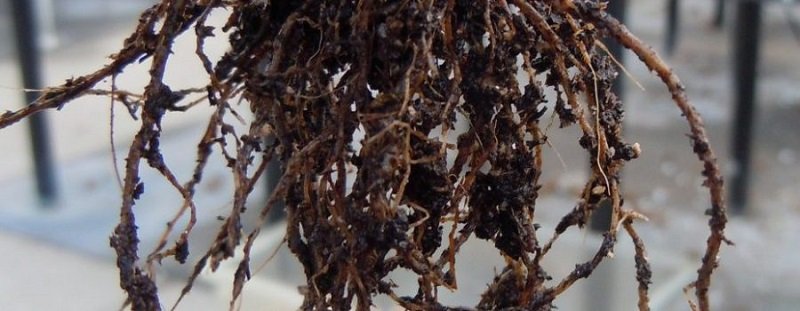
Identifying root rot can be difficult as the most obvious signs in the early stages are seen on the roots themselves. As most gardeners don’t typically dig down into the soil to check their plants’ roots every day, it’s unlikely that the roots are going to be the first thing you look at.
However, if you happen to be repotting your succulent or cactus and see something strange going on, you’ll be able to identify root rot if you see it. Otherwise, you’ll need to rely on any symptoms shown on the parts of the plant that remain above ground. But first, you’ll need to know how a healthy root system looks so that you can recognize any problems.
Healthy Roots vs Root Rots
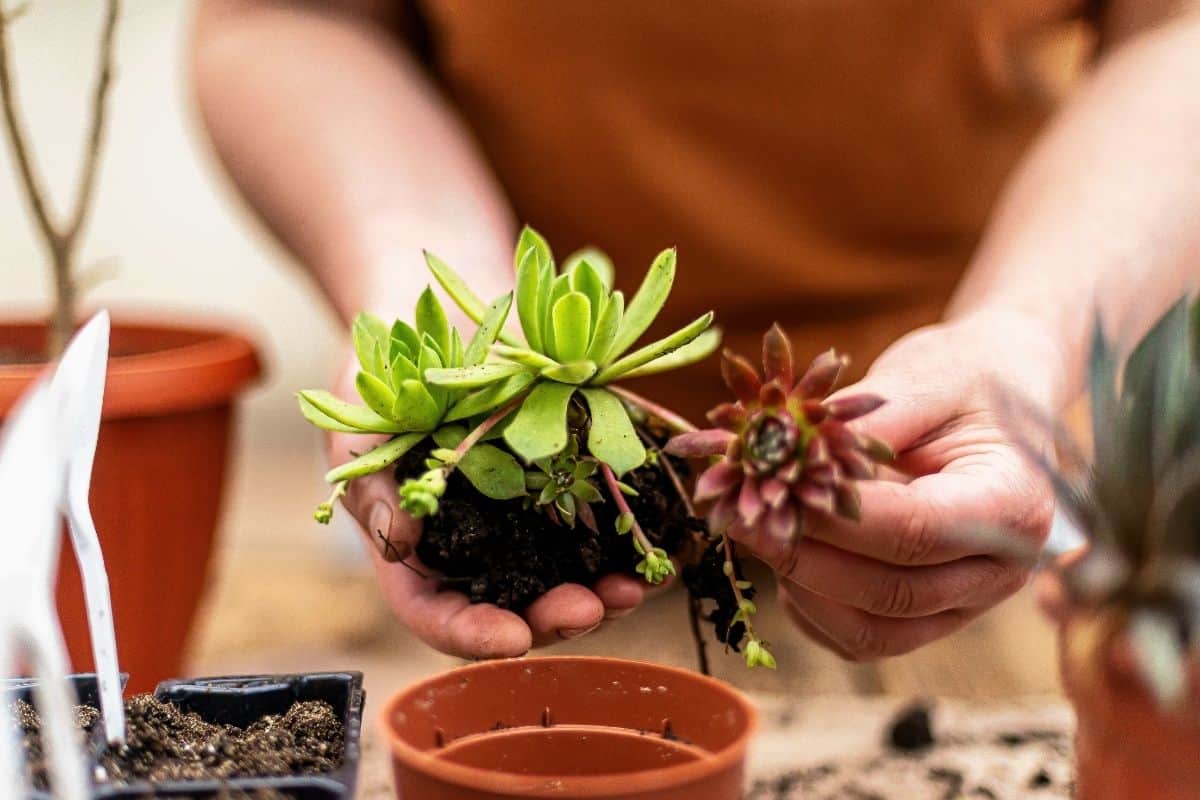
Healthy Roots
The best way to get a positive identification on root rot is to examine the roots directly. It’s helpful if you already know what healthy roots look like, but even if you don’t, it should be pretty obvious when you’re dealing with root rot.
Healthy roots are usually white or yellowish-white in color. They often have a light fuzzy layer over their surface. This fuzzy layer can be either the root hair, which help the plant absorb water, or mycorrhizal fungi.
No products found.
If you’re unfamiliar with mycorrhizal fungi, all you need to know is that it is a symbiotic fungus that helps the plant absorb nutrients. It’s easy for inexperienced gardeners to see fungi and become alarmed, but there’s no need to worry here, as mycorrhizal fungi is one of the good guys.
However, it’s also possible that you may have accidentally removed the fuzzy layer during the unpotting process. This won’t hurt your plant in the long run, especially if you discover that you have more rotten things to deal with.
With healthy roots, as soon as you begin to remove them from the soil, you should detect an earthy smell. This would be the soil you’re smelling, as healthy roots don’t really have their own odor.
If the roots appear to be a shade of light brown and feel dry to the touch, it’s not root rot you’re dealing with. Dry roots mean your succulent is in need of water, which isn’t the right environment for root rot to develop.
Read Also: How Big Do Succulents Get
Rotting Roots
If your plant has been affected by root rot, the roots will appear dark in color or even black in some cases. As you uproot the plant, you’ll probably lose a fair number of roots because as they rot, they become weak and will break easily.
Additionally, the roots will appear to be wet and will feel slimy to the touch. Rather than the earthy smell of a healthy root system, you may detect the odor of rotting vegetation. The stronger the smell, the more rotten the roots are.
Chances are, if you encounter root rot, you’re going to know it when you see it as it’s not a particularly subtle disease.
Leaves and Stem
During the early stages of root rot, you’re unlikely to notice anything sinister based on the appearance of your succulent. Most of the time, the plant isn’t going to give you any obvious signs above ground until it’s serious.
Eventually, you’ll notice the first signs of root rot on the succulent’s stem, just above the soil. The stem will begin to yellow and soon the lower leaves will be affected. The lower leaves may also begin to fall off.
However, it’s important to note that if the lower leaves are yellowing, but not the stem, your plant may just be suffering from overwatering and root rot hasn’t yet set in. On the other hand, if the leaves on the top of the plant are yellowing first, you may be looking at a nutrient deficiency rather than root rot.
In the final stages of root rot, you’ll notice the leaves will start to feel soft and squishy. Unfortunately, mushy leaves mean it’s too late to save your precious succulent.
How to Treat Root Rot
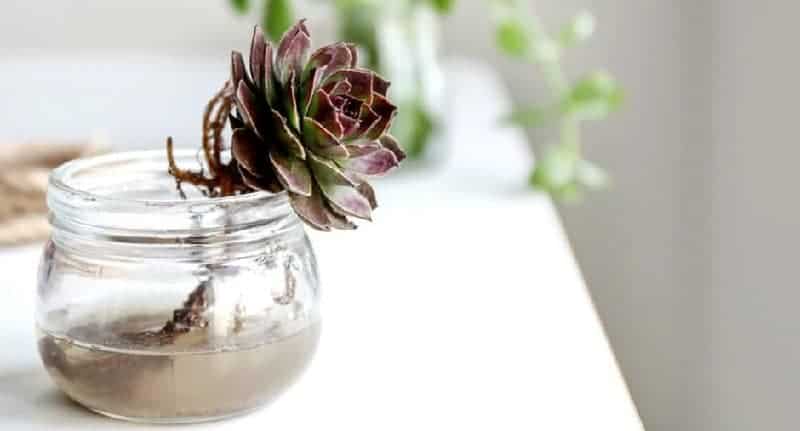
Unfortunately, there’s no way to reverse root rot once it has started. Depending on the severity of the rot, you may still be able to save your succulent, but it’s important to understand that there’s a chance you may not be able to.
One of the reasons that there’s such a low chance of survival for most plants is that they typically don’t start showing signs of rot in their stems and leaves until it’s too late. Unless you catch root rot in its early stages by coincidence, you may have to say goodbye to your beloved succulent.
Removing Affected Areas
Once you’ve identified root rot, usually by removing the plant from its soil, you can take a good look at the roots and decide how much of the root system has been affected. Remember, rot is recognizable by the blackened color and slimy feeling, so if you can see that some roots have yet to be affected, you might be able to save your plant.
Using a sharp pair of scissors or shears, you can try to trim away the affected areas of the plant. Cut away the blackened, slimy roots until only the healthy parts are left. Be sure to cut some distance above any discoloration to make sure you’re removing enough of the infected roots or else you risk continual spread.
After trimming up the root system, your succulent still may not make it, but it will have a better chance than it would if you had left the rotten roots intact to spread. Once you’ve cut away the rotten areas of the plant, consider letting it dry out for a few days before planting it in new soil.
Dry Out the Roots
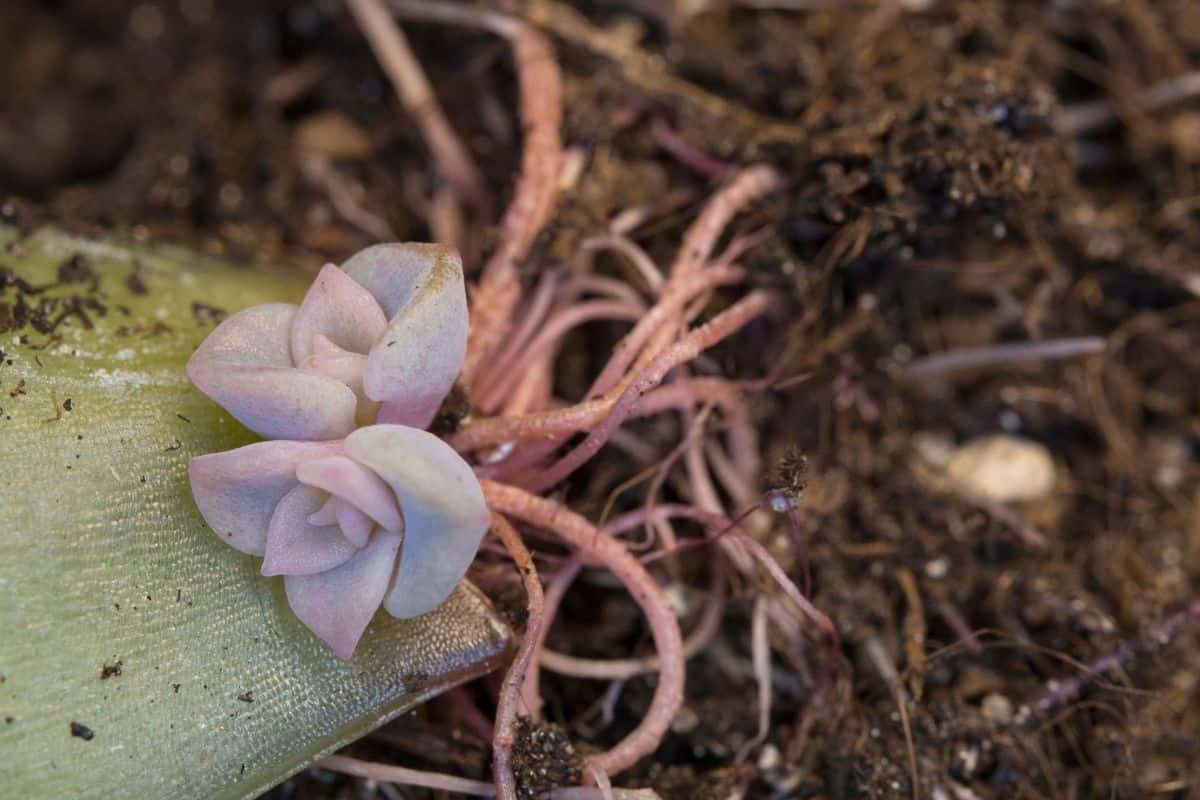
Before you replant your succulent, you need to let it completely dry out first. Just leave the succulent out of soil, in a warm, dry area. Keep the plant protected from direct sunlight for the time being.
Once you think the roots have dried out for a sufficient amount of time, you can consider replanting it, but if you have any doubts, it’s best to wait just a few more days.
It’s important to note that if you’ve trimmed away the affected areas and left your succulent out to dry, your precious plant isn’t quite out of the woods yet. It can be tricky to determine exactly how far the rot has spread, but if you’ve kept up with us so far, you’re doing all you can to keep your succulent alive.
Behead the Plant
If root rot has begun climbing the stem of your succulent and has affected the lower leaves, you may consider beheading the succulent as a last-ditch effort to save the plant. Though this is technically propagation and not a treatment, it may be the only way to avoid a total loss.
Though beheading may not be your first step in dealing with root rot, it may be your only option if you’ve trimmed away the rotten roots, let your succulent dry out for a few days, and still don’t think your plant is going to make it.
Before cutting your plant, make sure you’re using sharp, sterile garden shears or scissors. You need to make a clean cut to give your cutting the best chance at survival. Be sure to sterilize the scissors afterwards as well to prevent the spread of any bacteria or fungus picked up from the affected plant.
When taking your cutting, it’s crucial that you make your cut well above the obviously affected areas of the stem. Most experts recommend cutting at least two inches above the highest area of rot. This way, if any rot has climbed up the center of the stem and isn’t yet visible, you should be able to avoid taking any of it with the new cutting.
Once you’ve cut away the healthy part of the plant, you can treat it like you would any other cutting. Let it dry out a few days to allow the cut to callous over, use rooting hormone if you choose, and place it in a new container. Once the cutting has produced roots, you can begin caring for it as you would any other succulent.
Just remember not to overwater it this time.
How to Prevent Root Rot
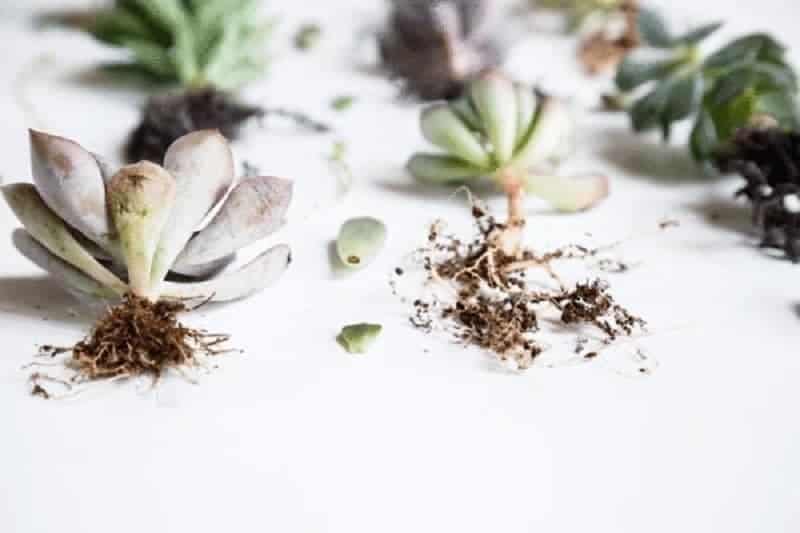
Root rot can be a pain to deal with, so it’s best to prevent it from infecting your succulents in the first place. It may be difficult to treat, but it’s incredibly easy to prevent as long as you pay close attention to your succulents’ needs.
Soil
Whether you’ve managed to save your succulent or have decided to behead it, it’s important that you do not plant it in the same soil you removed it from. It can be difficult to determine exactly what caused your plant’s roots to rot, so you don’t want to return it to potentially infected soil after spending so much time trying to save its life.
Though it’s not required for healthy plants, you may want to consider using sterilized soil. It’s easy to sterilize soil yourself and it will give you peace of mind to know that your beloved succulent is planted in soil that’s free from disease.
It’s also crucial that you plant your succulents in well-draining soil. Soil that is heavy in clay, for instance, will retain too much water, which could lead to root rot. Always plant your succulents and cacti in soil specifically formulated for them or make your own appropriate soil mix.
So, what is well-draining soil? Well, it’s a soil made up of large particles that won’t retain water. This could be things like sand, gravel, bark, or perlite. If you want to know about what soil is best for succulents, read more in our guide to succulent soil.
Containers
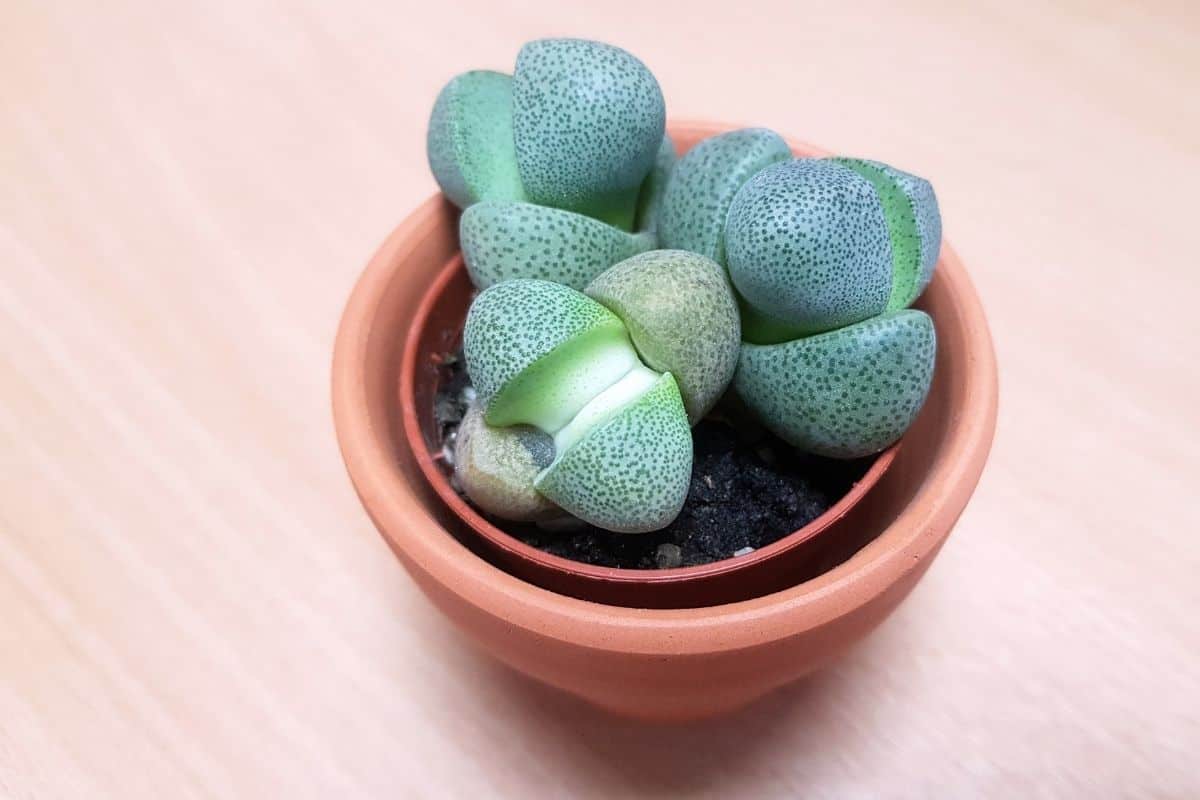
Once you’ve found the perfect soil for your succulents and cacti, it’s crucial that you plant them in containers that allow for proper drainage. Sure, that teacup or vintage planter looks great, but if it doesn’t have a drainage hole, you may want to reconsider.
Although it’s not impossible to prevent root rot in a pot without drainage, it is much harder than just using a container with a hole. If you’ve already dealt with the heartbreak of root rot once, it’s best not to risk losing your favorite plants again by planting them in the wrong pot.
Water
So, what’s the most important thing you can do to prevent root rot? Don’t overwater your succulents and cacti! It’s really that simple. If you don’t put too much water in the soil, the fungus, bacteria, or moisture that causes rot won’t be able to infect the roots.
As much as we wish we could tell you to water your succulents every X number of days and they’ll always have the right amount of water, it’s just not that easy. How often you water your plants will depend on a few factors.
If you live in a particularly hot climate, such as the southwestern US, you may find yourself watering your plants far more frequently than a gardener living in the Northeast. Water evaporates more quickly in hot, dry weather, so your plants will need water more frequently.
If your plants are indoors, you may need to water them less frequently than you would if they were outside with the sunshine and breeze working to evaporate the water from the soil. Even the kind of pot you use could affect how quickly the soil loses water.
It’s also important that you adjust your watering schedule to the seasons. You’ll need to water more in the summer than in the winter, for instance. In fact, for succulents that experience a period of dormancy in the winter, you may need to water them very little or not at all until spring.
A general rule of thumb is to let the soil dry out before watering your succulents. If in doubt, you can wait a couple days to make sure. Most gardeners find that watering their succulents every 7-10 days is ideal, but again, you’ll need to adjust that schedule to suit your plants’ individual needs.
If you need help determining the right watering schedule for your plants, read our complete guide to watering succulents and cacti here.
If you’re still not completely sure about how to tell if your succulents are in need of water, you might want to consider investing in a soil moisture meter. These simple devices can be inserted into the soil to give you a reading on the moisture levels so that you can decide whether or not it’s time to add water.
You Might Also Like:


